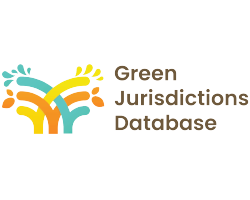Green Jurisdictions Database
ABOUT US
EII's Green Jurisdictions Database is the most comprehensive source for information on progress toward low-carbon development in tropical forest jurisdictions around the world. Drawing on a range of indicators and the latest in forest monitoring technology, the Green Jurisdictions Database allows users to gauge an individual jurisdiction's advances in areas including forest conservation, carbon capture and storage, as well as providing information on agricultural commodities and forest products, governance and economic development.
home.about.about.v1
Why Jurisdictions?
Jurisdictional strategies hold tremendous potential for advancing holistic, durable solutions to the intertwined issues of tropical deforestation, rural livelihoods, and food security. Jurisdictional governments at the state and municipal level are often best equipped to identify and implement approaches to forest protection and sustainable development. Embedding these solutions in public policy aimed at protecting natural resources while enhancing economic and social well-being lies at the heart of the jurisdictional approach.
Our Methodology
The Green Jurisdictional Database aggregates, harmonizes and structures official national and regional information provided by national forest monitoring systems, national agricultural offices and national statistical offices. This data provides the most reliable and trusted information available to enable decisions and monitoring at the jurisdictional level. The data is retrieved by Earth Innovation through direct online official distribution channels or through direct partnership with national officers.
The data is presented mainly on a yearly basis and offers a temporal profile of the last 20 years (year 2000 onwards). The data presented here has been curated, revised and harmonized to enable comparisson across jurisdictions across countries. The Jurisdictional Databases covers mainly forest regions where EII has presence and has established regional partnerships: Brazil, Colombia, Peru, Ecuador, Mexico and Indonesia. Other places will be aggregated gradually to maximize coverage of tropical areas.
The concepts of forest and deforestation used in this database are taken from the physical definition adopted by each country and is based on the forest reference emission level (FREL) and the functional implementation adopted by each national forest monitoring system. In jurisdictions where official data on yearly deforestation area is not available regional or global maps drive the adopted forest definition. The deforestation rate indicates the percentage of remaining forest that is lost each year and is calculated using the data sources indicated above. The remaining forest cover indicates the share of current forest cover in the jurisdiction with respect to the original forest cover.
Find out more about sources and data processing on this platform here.
How to cite
To cite the Green Jurisdictions Database please use:
Green Jurisdictions Database. Earth Innovation Institute. Accessed on (date). https://greenjurisdictions.org

